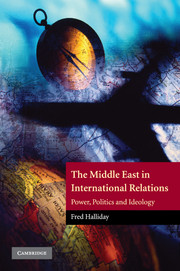Book contents
- Frontmatter
- Contents
- List of maps
- List of tables
- Acknowledgements
- Introduction: world politics, the Middle East and the complexities of area studies
- Part I Concepts, regions and states
- Part II History
- Part III Analytic issues
- 6 Military conflict: war, revolt, strategic rivalry
- 7 Modern ideologies: political and religious
- 8 Challenges to the state: transnational movements
- 9 International political economy: regional and global
- Part IV Conclusion
- Appendices
- Select bibliography
- Index
6 - Military conflict: war, revolt, strategic rivalry
Published online by Cambridge University Press: 05 September 2012
- Frontmatter
- Contents
- List of maps
- List of tables
- Acknowledgements
- Introduction: world politics, the Middle East and the complexities of area studies
- Part I Concepts, regions and states
- Part II History
- Part III Analytic issues
- 6 Military conflict: war, revolt, strategic rivalry
- 7 Modern ideologies: political and religious
- 8 Challenges to the state: transnational movements
- 9 International political economy: regional and global
- Part IV Conclusion
- Appendices
- Select bibliography
- Index
Summary
Wars, old and new, and the formation of the Middle East
Armed conflict, social upheaval and the impact of the world economy have constituted the three most important formative influences on the Middle East. In a famous summary of the events of the twentieth century in particular, the German philosopher Hannah Arendt said that it was a time of ‘wars and revolutions’. If this is true of Europe, it equally characterises other regions of the world, not least East Asia and the Middle East. Here, as with culture, state and nation, the appearance of ancient patterns of conflict, via wars, reveals the rupture introduced by modernity. What distinguishes modern history is the combination of war with socio-economic change and revolution, and the very different character of the first. Prior to the twentieth century, the role of war was evident in the ways in which the ancient pre-Islamic empires, the Persians, the Greeks and Romans and others, were created by war as well as in how the major Islamic empires were formed: the initial Arab conquests forged an Islamic world that was, later, ruled by the Ummayads, the Abbasids, the Safavis and the Ottomans. It was war too which began to reverse this process, to push back the frontiers of the Islamic empires, from the fourteenth century in Spain and the seventeenth on the western (Austrian) and northern (Russian) frontiers of the Ottoman empire.
- Type
- Chapter
- Information
- The Middle East in International RelationsPower, Politics and Ideology, pp. 167 - 192Publisher: Cambridge University PressPrint publication year: 2005

